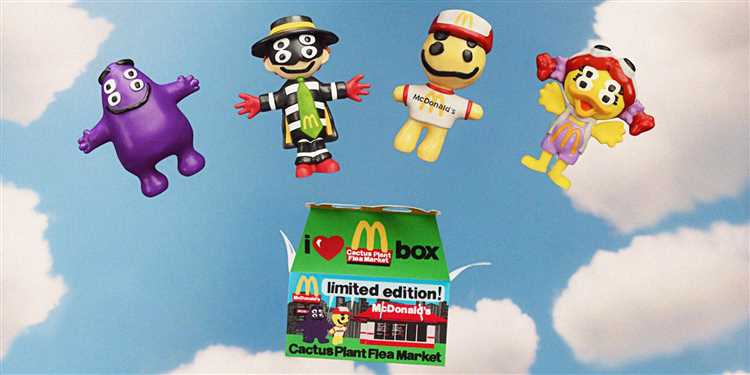
Happy Meals have long been a beloved treat for children around the world. With their iconic packaging, colorful toys, and enticing menu options, these meals have captured the hearts and taste buds of young ones for decades. However, with the growing concern for nutrition and the rise of healthier alternatives, the question arises: Are Happy Meals still as popular with kids as they once were?
Despite the changing landscape of children’s dining preferences, Happy Meals continue to hold a special place in the hearts of many children. The appeal of receiving a toy alongside their meal is a significant draw for kids, as it adds an element of excitement and anticipation to their dining experience. The ability to collect and trade toys with friends further adds to their appeal, creating a sense of camaraderie among children.
Furthermore, Happy Meals offer a variety of menu options, ensuring that even the pickiest of eaters can find something to enjoy. From classic cheeseburgers to chicken nuggets, these meals cater to a wide range of tastes and preferences. Additionally, the inclusion of healthier sides such as apple slices and milk provides parents with options to balance out the meal and promote a nutritious diet.
While the popularity of Happy Meals may have faced some challenges in recent years, their continued presence and loyal following among children speak to their enduring appeal. Whether it’s the joy of receiving a toy, the variety of menu options, or the opportunity for a special treat, Happy Meals have carved out a special place in children’s hearts and are likely to remain a beloved choice for years to come.
- Are Happy Meals still loved by children?
- The power of customization
- Lasting memories and nostalgia
- The history of Happy Meals
- Why were Happy Meals so popular?
- Are children still interested in Happy Meals?
- The Power of Influence
- Expanding Options
- How have Happy Meals evolved over time?
- What do parents think about Happy Meals today?
- What is the future of Happy Meals?
- Health and nutrition initiatives
- Evolving tastes and preferences
- Q&A:
- Are Happy Meals still popular with kids?
- What makes Happy Meals attractive to kids?
- Do Happy Meals still include toys?
- How have Happy Meals evolved over the years?
- Are Happy Meals considered a healthy option for kids?
- Are Happy Meals still popular with kids?
Are Happy Meals still loved by children?
Despite the continuously changing landscape of children’s preferences in food, Happy Meals have managed to maintain their appeal over the years. These iconic children’s meals offered by McDonald’s have been a fan-favorite for generations.
One of the main reasons why Happy Meals remain popular is the inclusion of enticing toys that are often tied to popular movies, television shows, or video games. Kids are naturally drawn to these toys and often look forward to collecting them all. McDonald’s has successfully tapped into the desire of children to have something fun and new.
The power of customization
Another factor that contributes to the ongoing popularity of Happy Meals is the ability for kids to customize their meal. McDonald’s offers a variety of options for children to choose from, such as their preferred main course, side dish, and beverage. This allows children to feel a sense of control and ownership over their meal.
Furthermore, the inclusion of healthier options in Happy Meals has helped parents feel more comfortable with choosing these meals for their children. McDonald’s has made efforts to offer choices like apple slices and milk alongside the traditional french fries and soda, catering to the increasing demand for healthier options.
Lasting memories and nostalgia
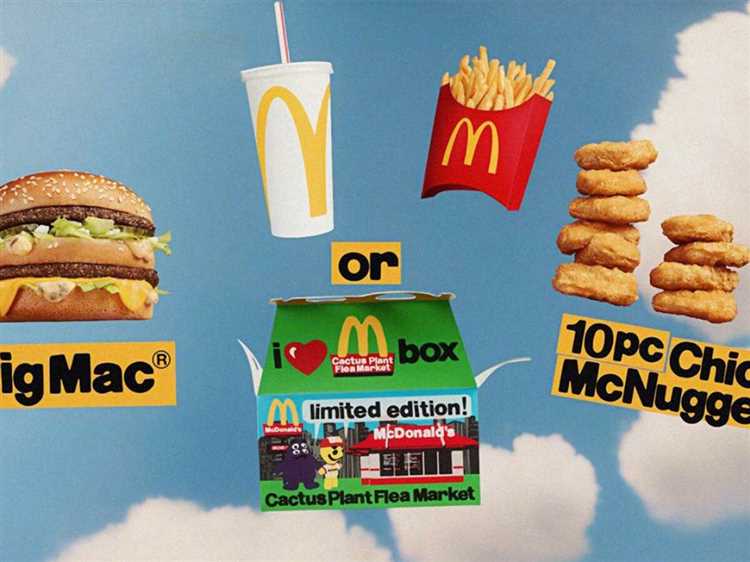
For many adults, Happy Meals hold a special place in their childhood memories. The experience of going to McDonald’s and receiving a Happy Meal was often seen as a special treat or a reward. This nostalgia factor has created a sense of loyalty and continued excitement for Happy Meals among both parents and their children.
In conclusion, Happy Meals have managed to remain loved by children due to the inclusion of enticing toys, the ability to customize their meal, and the nostalgic factor that keeps parents and children coming back for more. Despite the ever-evolving food preferences, Happy Meals continue to be a popular choice for both kids and parents alike.
The history of Happy Meals
Happy Meals were introduced by McDonald’s in 1979 as a way to offer a special meal for children. They quickly became popular with kids and their parents.
The first Happy Meal included a hamburger or cheeseburger, fries, a soft drink, and a toy. The meal was packaged in a colorful box featuring characters from popular children’s franchises.
Over the years, McDonald’s partnered with various toy companies to include popular toys in the Happy Meals. Some of the most iconic toys included Beanie Babies, Hot Wheels cars, and Disney figurines.
In addition to the toys, Happy Meals also started to feature healthier options as society became more health-conscious. McDonald’s began including apple slices, milk, and grilled chicken wraps as alternatives to the traditional burger and fries.
The popularity of Happy Meals continued to grow, with children often excited to collect the latest toy or try the newest menu options. Happy Meals became a staple of birthday parties and family outings to McDonald’s.
In recent years, McDonald’s has faced criticism for marketing unhealthy food to children through Happy Meals. In response, they have made efforts to improve the nutritional content and offer more balanced options, such as adding fruit and reducing the amount of salt and fat in the meals.
Despite the challenges, Happy Meals remain a popular choice for kids, providing a fun and special experience that has been enjoyed for decades.
Why were Happy Meals so popular?
Happy Meals have been a beloved choice for kids for many years due to a combination of factors. These factors include:
- Playfulness: Happy Meals come with a toy, and this has always been one of the main attractions for kids. The idea of receiving a surprise toy with their meal adds an element of excitement and fun to the dining experience.
- Variety: Happy Meals offer a range of options that cater to different taste preferences and dietary needs. With choices like hamburgers, chicken nuggets, apple slices, and low-fat milk, there is something for everyone.
- Branding: McDonald’s has successfully established a strong brand image over the years, and this extends to their Happy Meals. The iconic golden arches and Ronald McDonald mascot create a sense of familiarity and trust among children and their parents.
- Collectibility: Some Happy Meal toys are part of limited-edition collections or tie-ins to popular movies or TV shows. This adds an element of collectibility to the toys, making them even more desirable for kids.
- Specialty items: McDonald’s often partners with well-known brands to offer themed Happy Meal items. This creates a sense of exclusivity and allows kids to enjoy their favorite characters in a mealtime setting.
All of these factors contribute to the enduring popularity of Happy Meals with kids. They not only provide a satisfying meal but also create a memorable and enjoyable dining experience that keeps children coming back for more.
Are children still interested in Happy Meals?
Happy Meals have been a popular choice for children for decades. The iconic combination of a delicious meal and a fun toy has made Happy Meals a mainstay in the fast food industry. However, with changing eating habits and increased awareness about healthy eating, some might wonder if children are still interested in Happy Meals.
Despite the growing health-consciousness, Happy Meals continue to be a hit with children. The appeal of a special meal designed just for them, coupled with the allure of a toy, still holds a strong attraction. In fact, many children eagerly anticipate the release of new toys and promotions associated with Happy Meals.
The Power of Influence
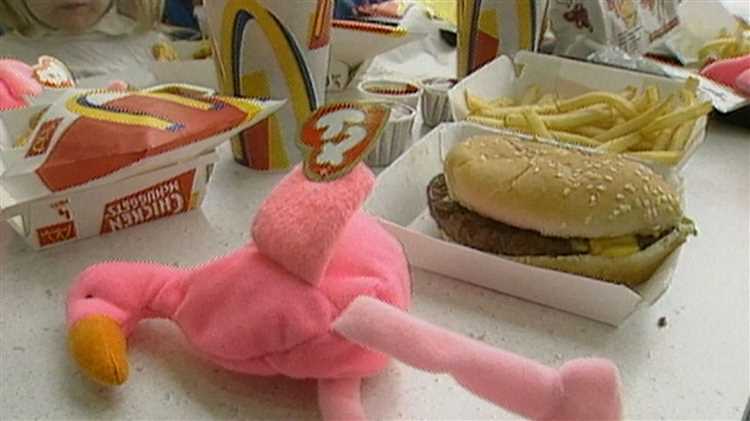
Marketing plays a significant role in keeping children interested in Happy Meals. From popular movie tie-ins to collectible toys, Happy Meal promotions are carefully designed to captivate young imaginations. The colorful packaging and display of toys at the counter further add to the excitement.
Additionally, the convenience factor cannot be underestimated. Happy Meals offer a quick and easy solution for busy parents looking to satisfy their children’s hunger while on the go. The combination of a tasty meal and a toy provides a convenient and enjoyable experience for both children and parents.
Expanding Options
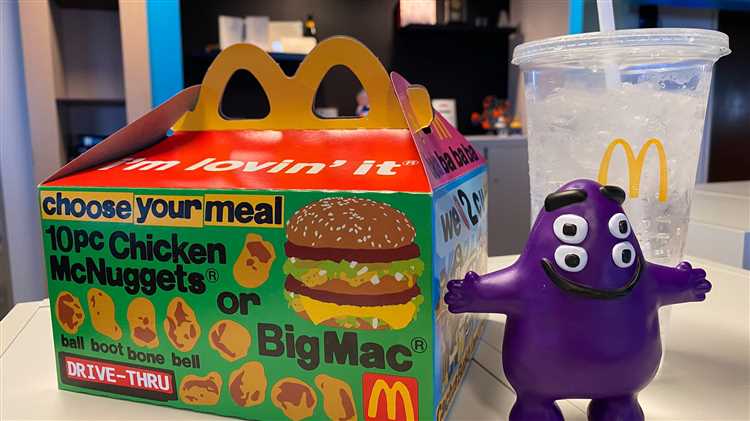
Recognizing the changing landscape of children’s food preferences and dietary requirements, McDonald’s and other fast food chains have made efforts to include healthier options in Happy Meals. This includes offering apple slices, yogurt, and milk as alternatives to fries and soda. These changes appeal to parents who are looking for healthier meal choices for their children.
| Advantages | Disadvantages |
|---|---|
| Appealing to children | Potential for unhealthy eating habits |
| Convenient for parents | Marketing tactics can be perceived as manipulative |
| Inclusive of healthier options | Limited variety of toys |
Overall, despite the changing landscape of children’s food preferences and increased emphasis on healthy eating, Happy Meals continue to captivate the interest of children. The combination of a special meal designed just for them, the appeal of a toy, and the convenience factor all contribute to their ongoing popularity. With efforts to include healthier options, Happy Meals can continue to provide a balance between fun and nutrition for children.
How have Happy Meals evolved over time?
Since their introduction in 1979, Happy Meals have undergone significant changes to keep up with the times and cater to children’s changing tastes and preferences.
Initially, Happy Meals consisted of a hamburger or a cheeseburger, a side of French fries, a small drink, and a toy. However, as society became more health-conscious, McDonald’s made efforts to improve the nutritional value of the meals. In 2004, they introduced apple slices as a healthier alternative to French fries, and in 2011, they reduced the portion size of French fries and added low-fat milk or apple juice as drink options.
Another notable change occurred in 2004 when McDonald’s began adding books to Happy Meals as part of their Happy Meal Books program. This initiative aimed to promote literacy among children and offered a range of age-appropriate books. In recent years, as technology became increasingly prevalent, Happy Meals started including digital toys and interactive activities to engage kids in a more modern way.
In response to growing concerns about the impact of fast food on the environment, McDonald’s also made efforts to make their Happy Meals more sustainable. They replaced plastic toys with paper-based toys made from recycled or sustainable materials, reducing their carbon footprint.
Furthermore, Happy Meals have evolved beyond just food and toys. McDonald’s introduced themed Happy Meals tied to popular movies, TV shows, and toy brands, enticing children with limited-edition items related to their favorite franchises. This strategy helped McDonald’s stay relevant in a highly competitive fast-food market and appeal to a younger demographic.
Overall, Happy Meals have transformed over the years to adapt to changing consumer preferences and societal concerns. While they still remain a popular choice for kids, McDonald’s continues to innovate and respond to evolving trends, ensuring that Happy Meals remain a staple in children’s dining experiences.
What do parents think about Happy Meals today?
Parents have mixed opinions when it comes to Happy Meals. Some appreciate the convenience and the ability to keep their children happy and satisfied with a quick and easy meal. They see it as a way to treat their kids and make dining out a fun experience.
On the other hand, some parents have concerns about the nutritional value and the impact of fast food on their children’s health. They worry that Happy Meals may encourage unhealthy eating habits and contribute to childhood obesity. Some parents feel that there should be more nutritious options and less emphasis on toys and marketing.
Many parents appreciate the efforts made by McDonald’s and other fast food chains to offer healthier choices and reduce the calorie and fat content in Happy Meals. They welcome the inclusion of fruits, vegetables, and milk as alternatives to fries and soda. However, they still believe there is room for improvement and hope for more sustainable and nutritious options in the future.
Overall, parents’ opinions about Happy Meals differ based on their values, priorities, and beliefs about nutrition. While some view it as a fun treat and a way to indulge their children, others are concerned about the potential negative effects on their kids’ health. It is important for parents to make informed choices and strike a balance between occasional indulgence and a well-rounded, nutritious diet for their children.
What is the future of Happy Meals?
As the fast food industry continues to evolve and adapt to changing consumer preferences, it is natural to wonder what the future holds for Happy Meals. With the growing emphasis on health and nutrition, as well as the increasing concern over childhood obesity, McDonald’s and other fast food chains are under pressure to provide healthier options for kids.
In recent years, McDonald’s has made efforts to improve the nutritional content of its Happy Meals. They have reduced the calorie count of the meals and have added healthier sides such as apple slices and yogurt. Additionally, they have introduced more variety by offering different options for the main course, including grilled chicken and fish fillets.
However, there is still room for improvement. Critics argue that while these changes are positive, Happy Meals are still not as nutritious as they could be. They suggest that fast food chains should focus on offering more fruits, vegetables, and whole grains in their kids’ meals, as well as reducing the amount of sodium and added sugars.
Health and nutrition initiatives
McDonald’s, along with other fast food chains, has faced pressure from advocacy groups and health experts to improve the nutritional value of their kids’ meals. In response, they have taken steps to offer healthier options and to provide more transparent nutrition information.
One possible future for Happy Meals could be an even greater emphasis on health and nutrition. McDonald’s could continue to improve the nutritional content of the meals by incorporating more whole foods, reducing unhealthy additives, and providing more balanced options for kids to choose from. They could also consider offering smaller portion sizes or creating customizable meal options to meet individual dietary needs.
Evolving tastes and preferences
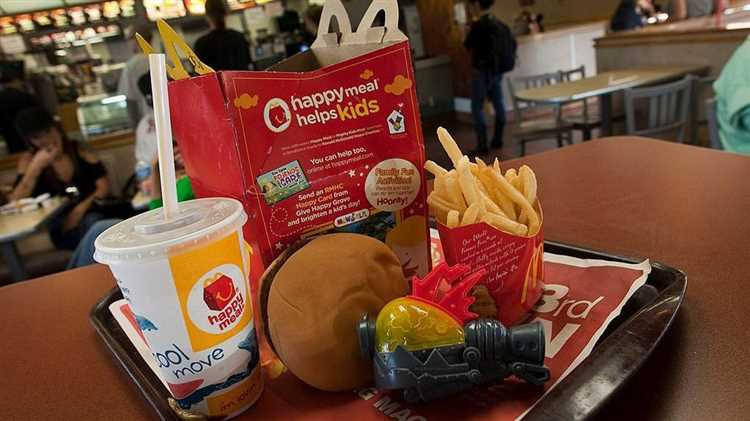
Another factor that will shape the future of Happy Meals is the evolving tastes and preferences of kids and their parents. As children become more exposed to diverse cuisines and healthier food options, their expectations for kids’ meals are likely to change.
Fast food chains may need to innovate and create new menu items that cater to changing tastes and dietary preferences. This could mean offering more plant-based options, incorporating ethnic flavors, or including more allergen-friendly choices. By staying ahead of the curve and adapting to changing consumer demands, fast food chains can continue to provide meals that are both appealing to kids and meet their nutritional needs.
| Pros | Cons |
|---|---|
| Convenient and affordable option for busy families | Can still be high in sodium, added sugars, and unhealthy fats |
| Includes a toy, which can increase the appeal for kids | May not offer enough variety or customization options |
| Efforts to improve the nutritional content of Happy Meals have been made | Could be even healthier by incorporating more whole foods and reducing additives |
In conclusion, the future of Happy Meals will likely be shaped by a greater emphasis on health and nutrition, as well as evolving tastes and preferences. Fast food chains like McDonald’s will need to continue to adapt and innovate to provide meals that are both appealing to kids and meet their nutritional needs. By offering more balanced options, incorporating healthier ingredients, and staying ahead of changing consumer demands, Happy Meals can remain a popular choice for kids in the years to come.
Q&A:
Are Happy Meals still popular with kids?
Yes, Happy Meals are still popular with kids. The combination of a toy and a meal targeted specifically for children is appealing and attracts their attention.
What makes Happy Meals attractive to kids?
Happy Meals are attractive to kids because they come with a toy, which is something that children love. The toys are usually tied in with popular movies or characters, which makes them even more appealing to kids.
Do Happy Meals still include toys?
Yes, Happy Meals still include toys. Toys have always been a big part of the Happy Meal experience, and they continue to be included with each meal.
How have Happy Meals evolved over the years?
Happy Meals have evolved over the years to offer a wider range of options. In addition to the traditional burger or chicken nugget meals, there are now healthier alternatives such as apple slices and milk as well as vegetarian options, reflecting the changing preferences of consumers.
Are Happy Meals considered a healthy option for kids?
Happy Meals have been criticized for their high calorie and sodium content, as well as the toys and marketing tactics used to attract children. However, in recent years, McDonald’s has made efforts to offer healthier options in Happy Meals, such as apple slices and milk, as well as reducing the calorie count and sodium content of its meals.
Are Happy Meals still popular with kids?
Yes, Happy Meals are still popular with kids. Despite the increasing focus on healthy eating, children are still drawn to the fun toys and tasty food that come with Happy Meals.